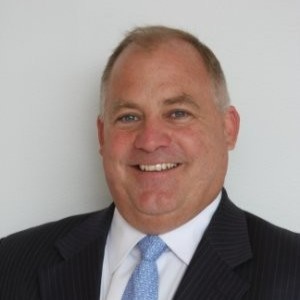Reaching the Underserved in Rural America
A closer look at how cardiovascular care is changing across the country.
Throughout my career, I’ve witnessed a lot of changes in healthcare. One constant over my thirty years of experience is that things do not stay the same. I’ve worked with hospitals, provider groups and payers – trying to help drive the right type of access, care, and value across the healthcare continuum. One of the biggest challenges I’ve observed is access to high-quality and timely rural healthcare.
Rural communities face a two-pronged problem. One on hand, there continues to be an ongoing physician shortage in much of the United States. According to Health Resources & Service Administration (HRSA), there are over 3400 Medically Underserved Areas (MUAs) designated by HRSA, which each have a shortage of PCPs and specialists serving their communities. For example, there are far fewer cardiologists in the Midwest and Western States – as little as 25% of the number of cardiologists per 100,000 residents ages 65 and older – compared to more densely populated areas.1 That problem is exacerbated by the lack of access to acute care: Since 2011, two-thirds of the hospital closures in the U.S. have been in rural areas.2
The second element at play is that there are ingrained social determinant barriers that ultimately prevent access to quality care, most notably with transportation and finance. Rural patients often have to drive farther to get care than the people who live in urban areas – and they often can’t afford to do so. A recent Pew Research Center Study found that the average travel time to reach an acute care facility is 34 minutes. That trip is often longer in more rural locations. which often suffer from higher poverty rates, too.3 Access to timely quality care becomes more and more of a challenge for too many rural communities – and hospitals and payers continue to look for solutions to address this intractable problem.
Specialty Demand
Certain specialties, focused on conditions like cardiovascular disease and diabetes, also have rising demand, as the baby boomer population ages and becomes higher risk. The demand for cardiovascular care, for example, continues to grow at an almost exponential rate. According to the Journal of the American College of Cardiology, cardiovascular disease has nearly doubled in prevalence since 1990, with deaths due to cardiovascular disease increasing by over 50%.4 Conditions such as Ischemic Heart Disease, Atrial Fibrillation, Hypertensive Heart Disease, and Ischemic Stroke make up almost 75% of the deaths due to cardiovascular disease.5 These conditions, if detected and addressed early and appropriately, can be treated and prevented.
What is clear is that the combined supply and demand for speciality care we are seeing will not be solved by historic approaches and processes.
Specialty Solutions
The question then is: how do we prepare for and address the problems that rural communities are facing across the country? The pandemic taught us that telehealth, virtual care, and innovative diagnostic technology enable providers and caregivers to expand capabilities, regardless of location. Doing so also helps address socio-economic barriers.
So what is the way forward? I’d like to suggest three discrete paths to help provide better access, care, and outcomes for rural America.
- Empower local Primary Care
There is, of course, a shortage of primary care providers in rural geographies. PCPs are stretched thin and often have to refer their patients to specialists hundreds of miles away. Between travel, time, money and fear, many of these patients don’t make it to the appropriate care provider under current conditions. Specialists need to partner with local primary care clinicians – using technology to meet patients where they are – to reverse this reality. That work might include virtual visits as well as provider-to-provider consults with specialists. - Leverage technology
Employing ground-breaking remote diagnostic devices, such as the Zio patch by iRhythm, changes the game. By enabling remote atrial fibrillation detection, virtual cardiologists can work with the local PCPs to read, diagnose and prescribe, allowing for the appropriate triaging of the patient — while still keeping the patient under the care of the PCP according to guideline-based protocols. - Enable virtual cardiovascular care
Most non-invasive cardiovascular care aligns well with virtual and telehealth capabilities. Patients don’t have to travel from their home to see a specialist, and access to care is improved. Virtual cardiologists can work with both local providers and patients to help manage chronic conditions and diseases like atrial fibrillation, vascular disease, and heart failure. CDC studies, in fact, have demonstrated the safety and effectiveness of home-based cardiac rehab is equal to the care delivered in facilities.5.
The Ultimate Impact
Evolving and improving how we collectively care for individuals with heart conditions across rural America will differ depending on the individual or stakeholder.
- For the Patient: With earlier detection, better diagnoses, and improved access, patient care can be drastically improved in areas where access and care are now lacking. Early detection saves lives, improves quality of life, and enables equitable cardiovascular care regardless of location.
- For the Primary Care Provider: By supporting the PCP in the diagnosis and treatment of cardiovascular disease, the PCP can treat more of the community appropriately, triage only those patients truly in need of in-person visits, and support earlier detection and care.
- For the Risk Bearing Entity e.g The Health Plan or Accountable Care Organization (ACO) Today, the outcomes for patients (or members) with potential cardiovascular intervention continue to be what risk-bearing entities ultimately care about. And the day-to-day care challenges I’ve outlined remain a real threat to change e.g.
- If an individual lives over 200 miles away from the specialist, will they end up making it there?
- Will non-emergent transportation be needed to an appropriate facility?
- Has the individual had the right diagnosis and oversight to validate a costly visit to the specialist?
- Could some of these visits have been diagnosed at the PCP office, with the appropriate support?
- Could an ER visit have been avoided?
Yet, there are signs of the status quo shifting. Heartbeat’s most recent clinical study6 showed that appropriate virtual care and support reduced cardiac-related hospital readmissions by 53%. By meeting members where they are — access to care, quality, and outcomes can be dramatically improved, and all stakeholders will benefit.
1 https://www.healthgrades.com/pro/8-things-to-know-about-the-cardiologist-shortage
2. https://www.healthaffairs.org/do/10.1377/forefront.20220222.972908
3 https://www.macpac.gov/wp-content/uploads/2021/04/Medicaid-and-Rural-Health.pdf
4 https://www.jacc.org/doi/10.1016/j.jacc.2020.11.010
6 http://www.heartbeathealth.com/wp-content/uploads/2023/03/ACC23-poster_web.pdf

SVP, Business Development, Heartbeat Health
